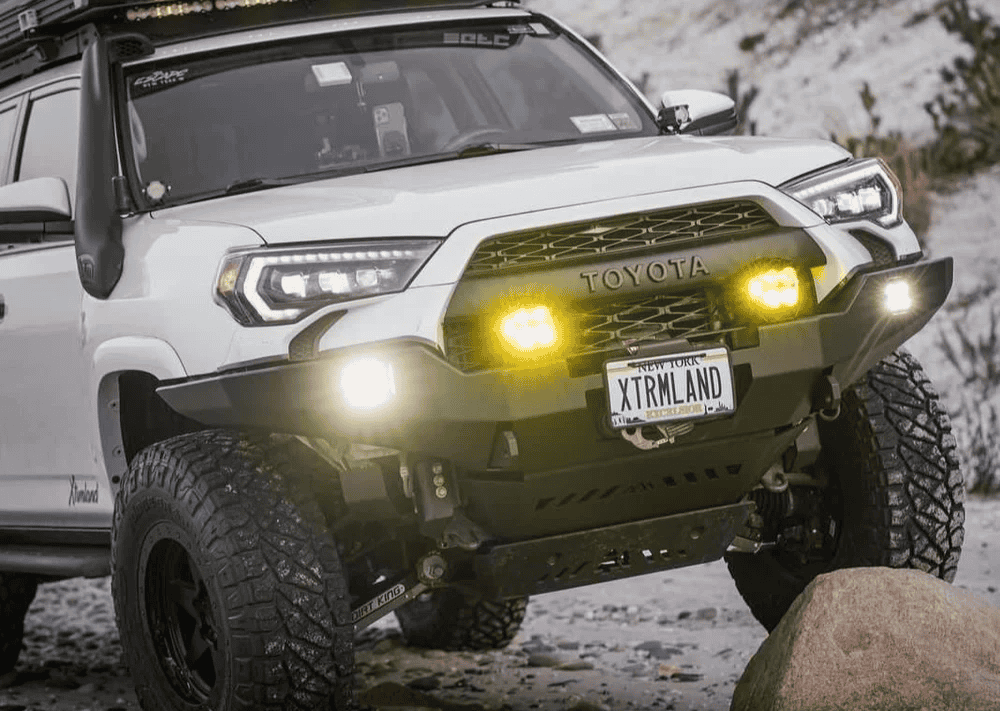Overland Vehicles

Off grid travel starts with resource planning, not gadgets. The truck must carry enough energy, water, fuel, and food to match your route and weather. It needs a chassis that manages weight safely and a cabin that stays functional when wind, dust, or cold move in. The build should be simple to operate, easy to service on the trail, and quiet enough to let the landscape do the talking.
Modern off grid power revolves around lithium batteries sized to your daily draw, paired with solar and alternator charging. A DC to DC charger protects both the truck and house batteries while maximizing charge rate on long drives. High draw items like induction cooktops and air conditioning demand a realistic energy budget. Many travelers run a compact diesel or gas heater to reduce battery load in winter and reserve inverter power for essentials.
Start by listing everything that consumes power, then convert to daily watt hours. Choose a battery bank that covers two days without driving, and backfill with solar that suits your parking style. Flat roof panels are low profile and durable. Portable panels let you park in shade while the panels sit in the sun.
Payload is the anchor metric. Heavy steel bumpers, winches, armor, water, and batteries add up fast. Choose a truck with enough payload on the door sticker to handle your plan with margin. Shorter wheelbases improve breakover angles and trail agility, while longer wheelbases stabilize highway travel. Tire size, tread, and load rating affect clearance, grip, and comfort. Suspension should match final weight, not the showroom figure, and quality shocks manage heat on washboard roads.
All terrain tires in the right load range protect the sidewall and carry weight without squat. Matched springs and shocks keep the contact patch planted, which preserves traction and braking. After the suspension is set, get a professional alignment and recheck torque after the first shakedown.
Water planning drives how long you can stay remote. Pair onboard storage with filtration so you can top off from creeks where legal. A compressor fridge beats ice for multi day trips and reduces food waste. Ventilation matters as much as insulation; roof fans and screened windows clear moisture and keep sleep comfortable. Secure, modular storage prevents rattles and keeps heavy items low and forward for balance. Good lighting inside the canopy or topper makes camp setup fast and calm after dark.
Use layered navigation: downloaded maps on a phone or tablet, a dedicated GPS, and paper maps as a fallback. For communication, a satellite messenger or communicator adds a lifeline beyond cell range. A compact GMRS radio supports group travel and trail coordination.
Carry a recovery kit sized to your truck: rated soft shackles, a quality strap, traction boards, and a jack that fits your lift and tire size. Know your recovery points and practice in a safe area before you need it for real. Fire safety is non negotiable; mount an extinguisher within reach and store fuel and solvents outside the sleeping area. Tread lightly by staying on established routes and packing out more than you bring in.
Shakedown trips expose what works and what needs tweaking. Track what you did not use and remove it to recover payload. Label circuits, carry spares, and keep your tool kit specific to the fasteners on your truck. The best builds feel calm to operate because systems are clear, reliable, and not overloaded with gimmicks.
If you are ready to translate plans into a dependable truck, lean on a team that designs complete systems rather than bolt ons in isolation. Explore how dedicated overland platforms come together on see our overland rigs. For tailored components like electrical, storage, armor, suspension, and interiors, review our process at custom overland upfit. Curious about build quality, communication, and delivery experience from start to finish? Visit why choose OZK Customs.
We craft full overland rigs that balance energy systems, ride quality, and livability so you can stay remote without stress. Our shop in Northwest Arkansas designs and builds custom adventure vans, overland trucks, towable campers, commercial vans, and upgrades like suspension, racks, lighting, and connected internet. We handle design, fabrication, wiring, and integration under one roof so your truck feels cohesive and easy to use.
Tell us how far you want to get from the grid, and we will map a system that fits your style. From battery banks and DC charging to tuned suspension and organized storage, our team builds trucks that feel intuitive on day one and durable on day one hundred. Share your trip goals, and we will help you choose the right platform and plan the details that keep you rolling.
Ready for a purpose built overland rig that keeps power flowing and comfort steady far from pavement? OZK Customs designs and builds complete overland trucks with proven electrical systems, dialed suspension, and thoughtful living space. Tell us how you travel, and we will engineer the truck to match. Share your route goals to start your build plan today.
ADDRESS:
6159 E Huntsville Rd, Fayetteville, AR 72701
PHONE:
(479) 326-9200
EMAIL:
info@ozkvans.com